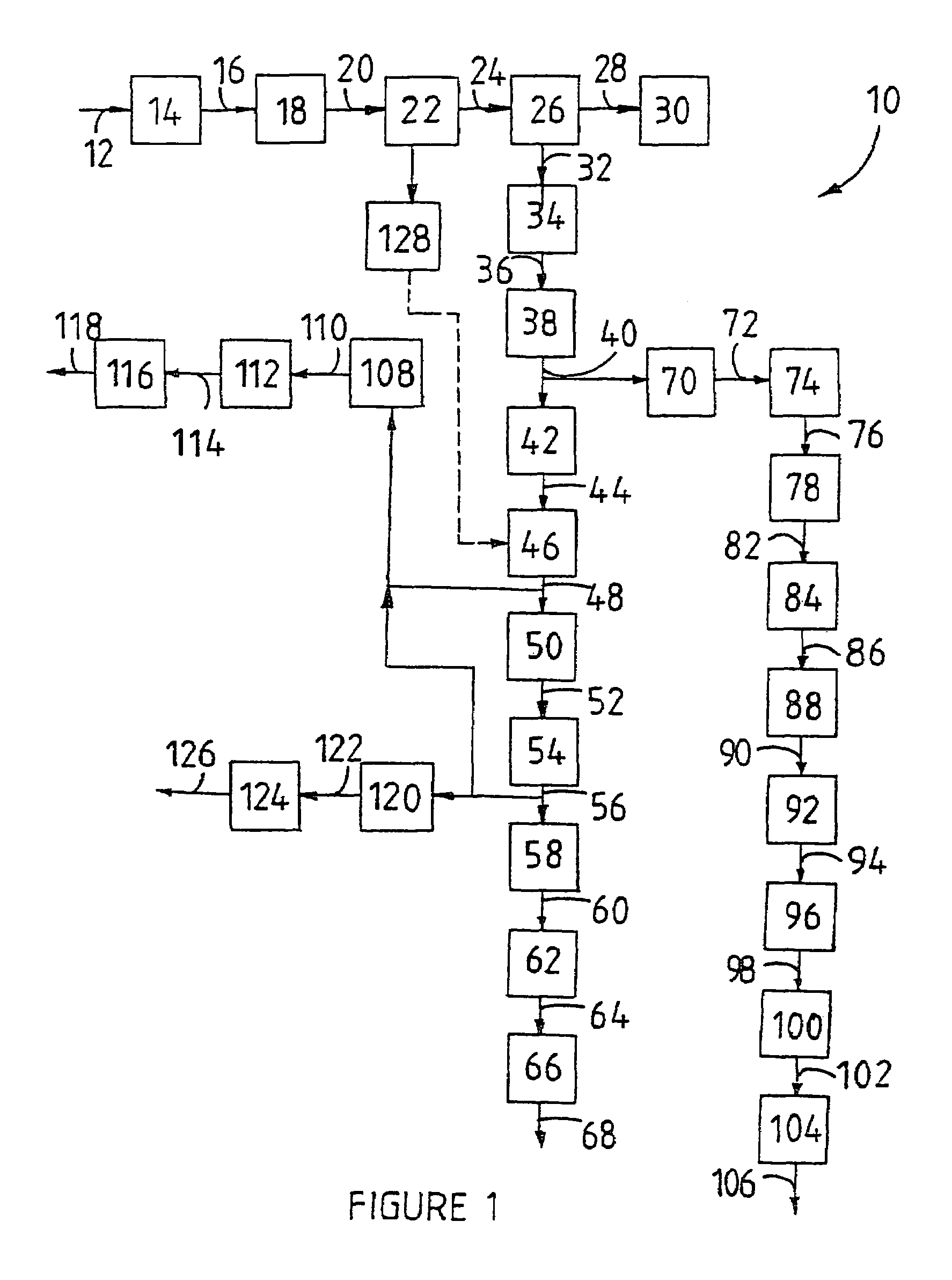Beneficiation of zircon
a zircon and sulfate technology, applied in the field of zirconium containing products processing, can solve the problems of high volume and long procedures, and the zircon has a natural radioactive content and associated occupational health and environmental difficulties
- Summary
- Abstract
- Description
- Claims
- Application Information
AI Technical Summary
Benefits of technology
Problems solved by technology
Method used
Image
Examples
example 1
[0118]AFDZ was prepared using zircon powder with a d50 particle size of 6.5 μm, using the fusion or reaction conditions listed in Table 1. In all instances a fusion time of 90 minutes was used. The AFDZ was cooled down before comminuting the solids to a particle size 3 to pH values of >10 for complete precipition of their silica contents. The precipitates were separated, washed, dried and finally calcined at about 750° C. The percentages of the silica water-extracted from various fusion products, are also given in Table 1.
[0119]To determine the percentages of acid extractable zirconium in the various AFDZ samples, their wet residues (after water extraction) were each treated with 20 g concentrated sulphuric acid per 18.3 g of initial zircon used in the fusions, dried and the roasted about 350° C. From the roasted products the AZST formed were water-leached and the solutions separated from the remaining solid residues. The AZST solutions were all evaporated to dryness and solid AZST ...
example 2
[0122]AFDZ was prepared using zircon powder with a d50 particle size of 6.5 μm, using the fusion or reaction conditions noted below in Table 2. The AFDZ was cooled, comminuted to a particle size of less than 1 mm and water leached to provide a water phase and a wet residue. The wet residue was treated with NaHCO3 to recover Na2CO3, in solution form, therefrom, whereafter the wet residue was neutralised with HCl using methyl orange as an indicator (colour change from yellow to red). The wet residue was washed with water to remove sodium salts. H2SO4 was added in a stoichiometric quantity to the wet residue to convert acid extractable zirconium in the wet residue into ZBS. Following the in situ precipitation of solid ZBS the wet residue was evaporated to almost dryness at 120° C., and then twice acid washed with 150 ml of each acid solution (containing 8 g concentrated HCl and 4 g concentrated HNO3 in a liter of water). Additional H2SO4 was added to form AZST from the in situ formed Z...
example 3
[0126]Acid extractable zirconium in the wet residue, washed with water to remove sodium salts, as prepared in Example 2, was converted to AZST by adding a calculated stiochiometric quantity of H2SO4 thereto to form an AZST-containing product. The AZST-containing product was roasted to dryness at a temperature of about 350° C., whereafter it was dissolved in water to form an AZST-containing solution. A Na2CO3 solution was added to about 75% of the AZST-containing solution to precipitate hydrated zirconium basic carbonate (ZBC) therefrom. The final pH of the mixture was about 6.75. The precipitated hydrated ZBC was separated from the supernatant and thoroughly washed with water until was free of soluble sulphates. The ZBC precipitate was vigorously stirred up with the remaining 25% of the AZST-containing solution and the mixture was heated for about 10 minutes at a temperature of about 85° C., to in situ form a ZBS-containing slurry directly from the ZBC. The ZBS-containing slurry was...
PUM
| Property | Measurement | Unit |
|---|---|---|
| temperature | aaaaa | aaaaa |
| d50 particle size | aaaaa | aaaaa |
| temperatures | aaaaa | aaaaa |
Abstract
Description
Claims
Application Information
 Login to View More
Login to View More - R&D
- Intellectual Property
- Life Sciences
- Materials
- Tech Scout
- Unparalleled Data Quality
- Higher Quality Content
- 60% Fewer Hallucinations
Browse by: Latest US Patents, China's latest patents, Technical Efficacy Thesaurus, Application Domain, Technology Topic, Popular Technical Reports.
© 2025 PatSnap. All rights reserved.Legal|Privacy policy|Modern Slavery Act Transparency Statement|Sitemap|About US| Contact US: help@patsnap.com


